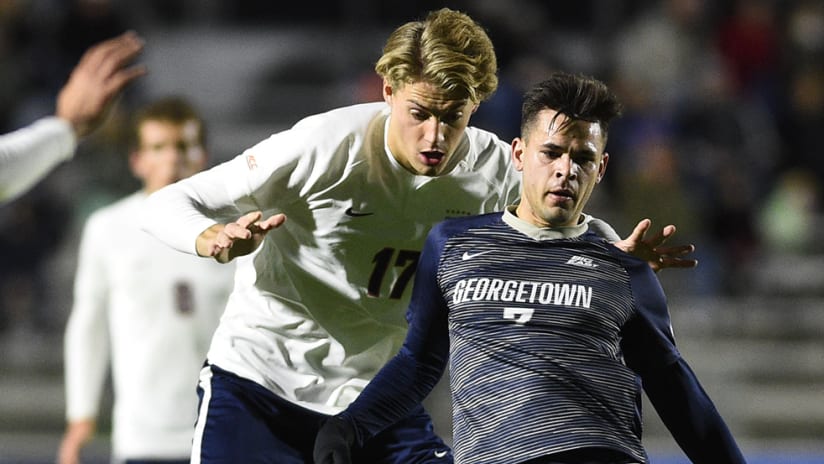The NCAA’s headline this week sounded like good news: “Panel approves soccer rules changes to align with international competition”. Given the chronic issues dogging the college game, that sounds promising, right?
Alas, this was the NCAA Playing Rules Oversight Panel, a body which only holds influence over what happens on the field or court of play proper. And it was approving a bank of relatively modest updates, like allowing goal kicks to be passed inside the 18-yard box and clarifying what goalkeepers can and can’t do on penalty kicks.
Worthy changes, all. Yet if “aligning with international competition” was a big priority, one might think that the countdown clock (yes, in NCAA ball it still goes from 90:00 to 0:00, which MLS abandoned at the turn of the century), overtime in regular-season games and freewheeling substitution rules might be on the docket, too. Not yet.
But the far bigger and more pressing question hanging over men’s college soccer right now must be decided by a more powerful panel: The NCAA Division I Council, which was all set to vote this week on the “21st Century Model” proposal to extend the men’s D-I season to a two-semester (fall-spring) schedule, with potentially dramatic benefits for both the college game and American soccer as a whole.
Thanks to the coronavirus pandemic, that vote has been tabled indefinitely. And as understandable as that is given the wider situation, it’s yet another delay in a reform effort that’s run some seven years – and literally can’t happen soon enough, given the aforementioned wider situation.
It wasn’t quite a shoo-in, but it did appear that University of Maryland coach Sasho Cirovski, the 21st Century Model’s point person, was close to locking up the necessary votes to get it passed this month.
While he and his allies have shown admirable patience and persistence in their quest to rescue college soccer from its dwindling relevance – going to a fall-spring calendar almost immediately makes for a far better developmental environment – the slow-moving gears of bureaucracy are particularly frustrating given the dizzying speed of current events.
Soccer is a “non-revenue sport,” in the NCAA’s cynical parlance, and that group is squarely in the crosshairs right now. This crisis has already robbed member schools of one massive income source, its college basketball tournament, and threatens another: the fall gridiron football season. Just like the proverbial grass that suffers most when elephants fight, if that money dries up, even in part, it’s the smaller sports that will feel the sting.
The University of Cincinnati just announced the shuttering of its men’s soccer program, which dates back to 1973, and Division II side St. Edward’s University in Austin soon followed suit – alarming setbacks in cities that have recently embraced MLS.
What’s been a slow trickle of men’s college teams dissolving over the past few decades could well become a torrent in the months ahead. Major conferences just filed an emergency request to suspend the regulations that limit the ways in which universities can slash their athletic budgets and programming.
There’s a common line of thinking college soccer doesn’t matter anymore, that its demise might actually help North American soccer overall. This ignores not only how many MLS, US and Canadian national team players past and present have benefited from NCAA stints, but also how important it is to have soccer represented in every possible sector of our society and culture.
Even if MLS academies continue their positive trajectory, prospects treading less-conventional pathways – consider the cases of Chris Wondolowski, Jay DeMerit and Jackson Yueill, for example – will continue to fall through the cracks because of the realities of geography, timing and individual development. College ball gives them a place to keep playing and growing. Its health cannot be divorced from that of the wider ecosystem.
Soccer fans of every stripe should be watching closely.













